Abstract
Blood-culture results for a 15-year period from a large southern hospital were tabulated and analyzed for alterations in the bacterial species associated with bacteremia. From 15,543 cultures, 2,410 positive cultures (15.6%) were obtained. These results were grouped into 5-year periods, and an alteration in the incidence of the agents was demonstrated. In the past 5 years, gram-negative bacilli have replaced gram-positive cocci as the most common agents of bacteremia, and several species not formerly associated with septicemia were found to be involved in a large number of cases. The importance of the clinical laboratory monitoring blood culture results was demonstrated as was the need for constant collaboration between the clinician and microbiologist.
Full text
PDF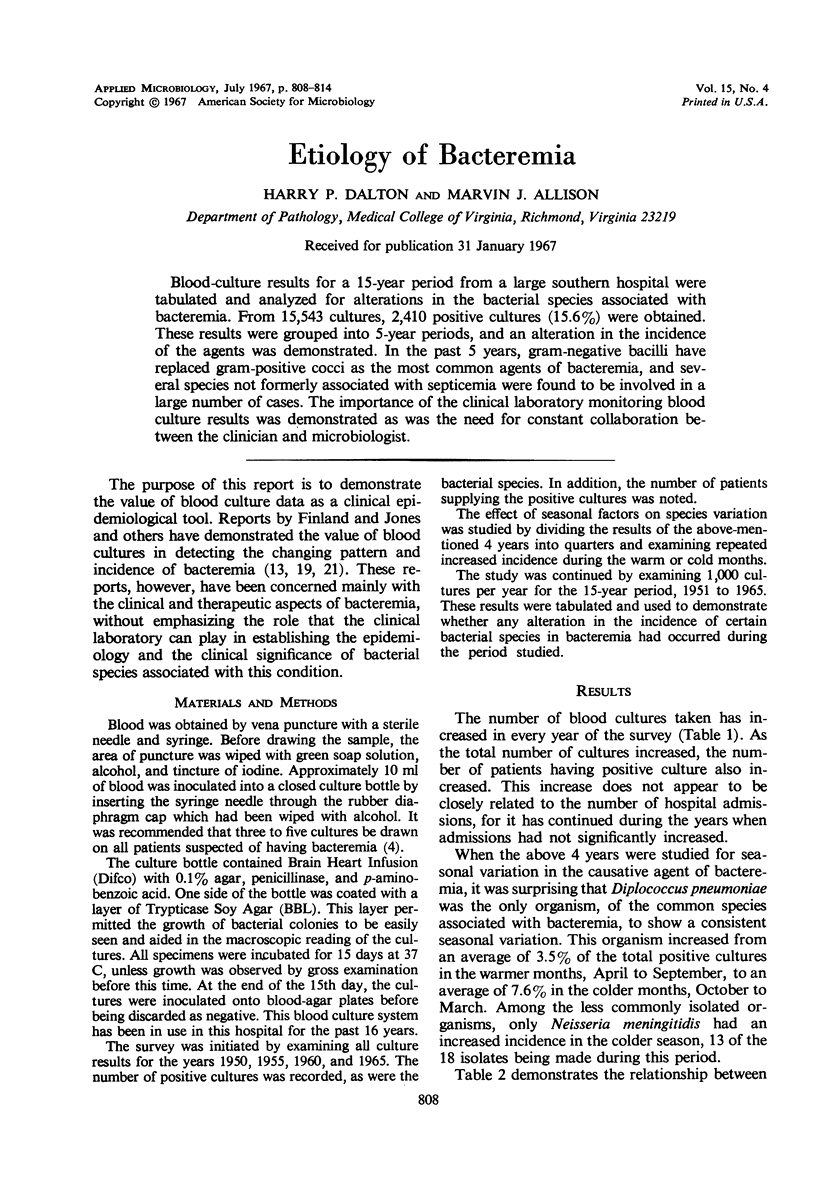
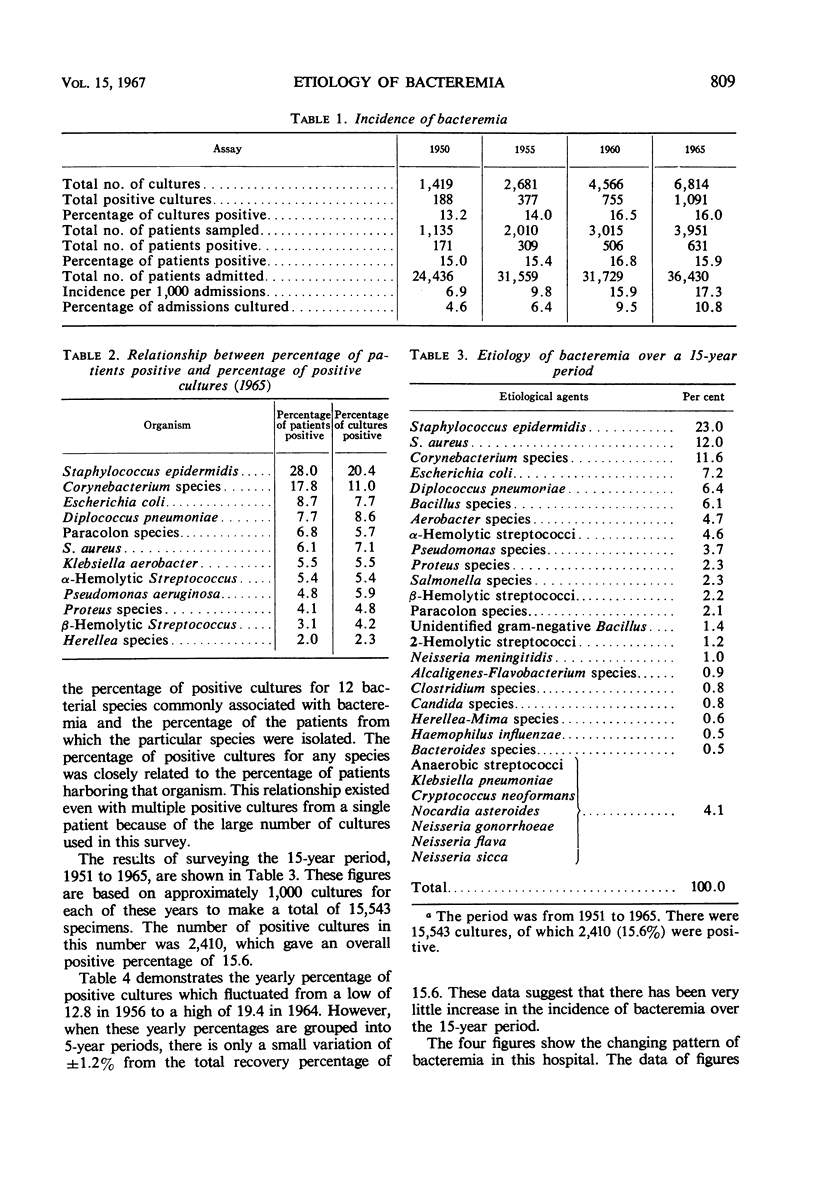
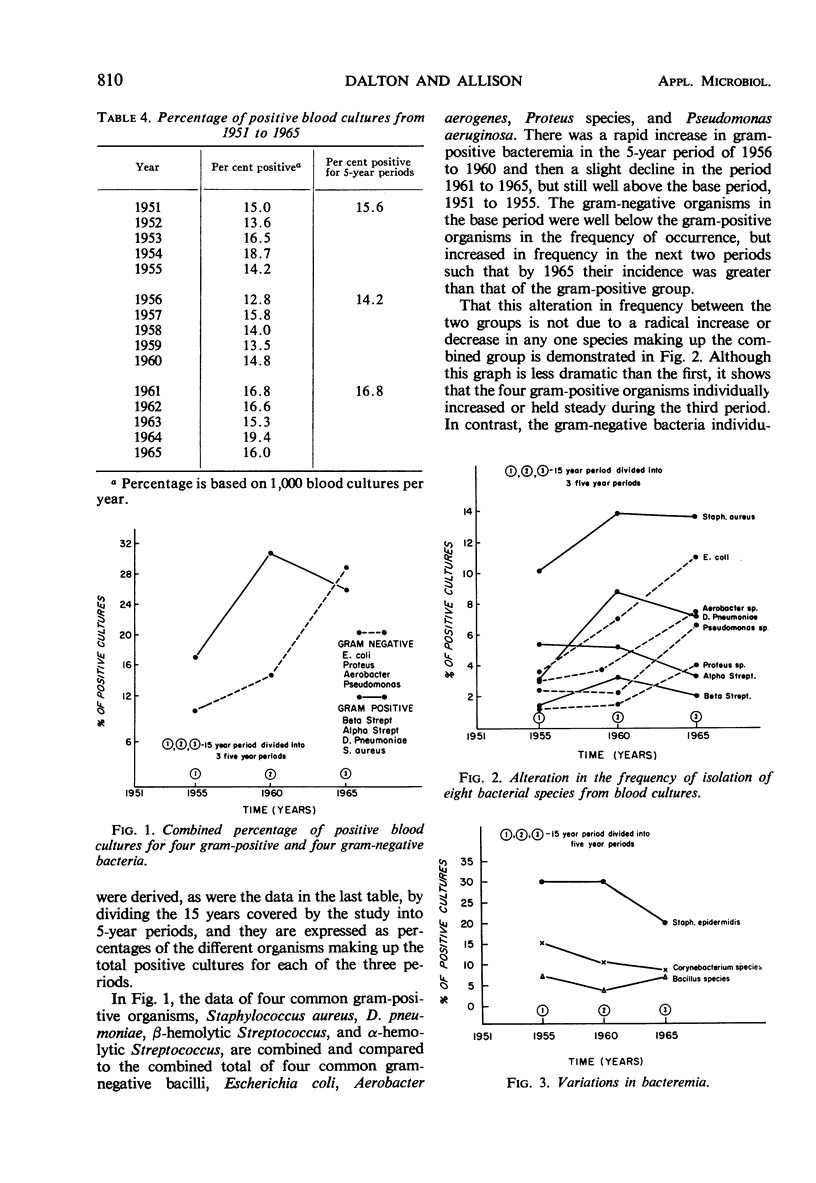
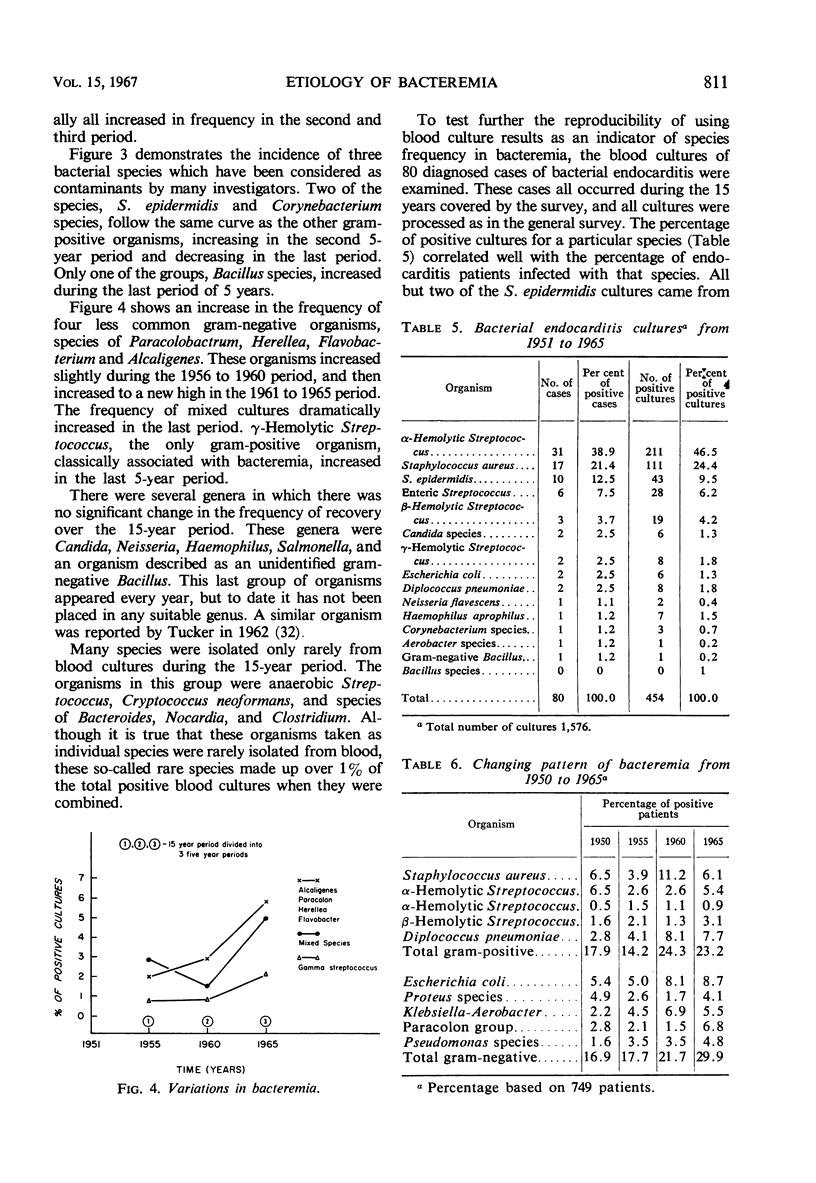
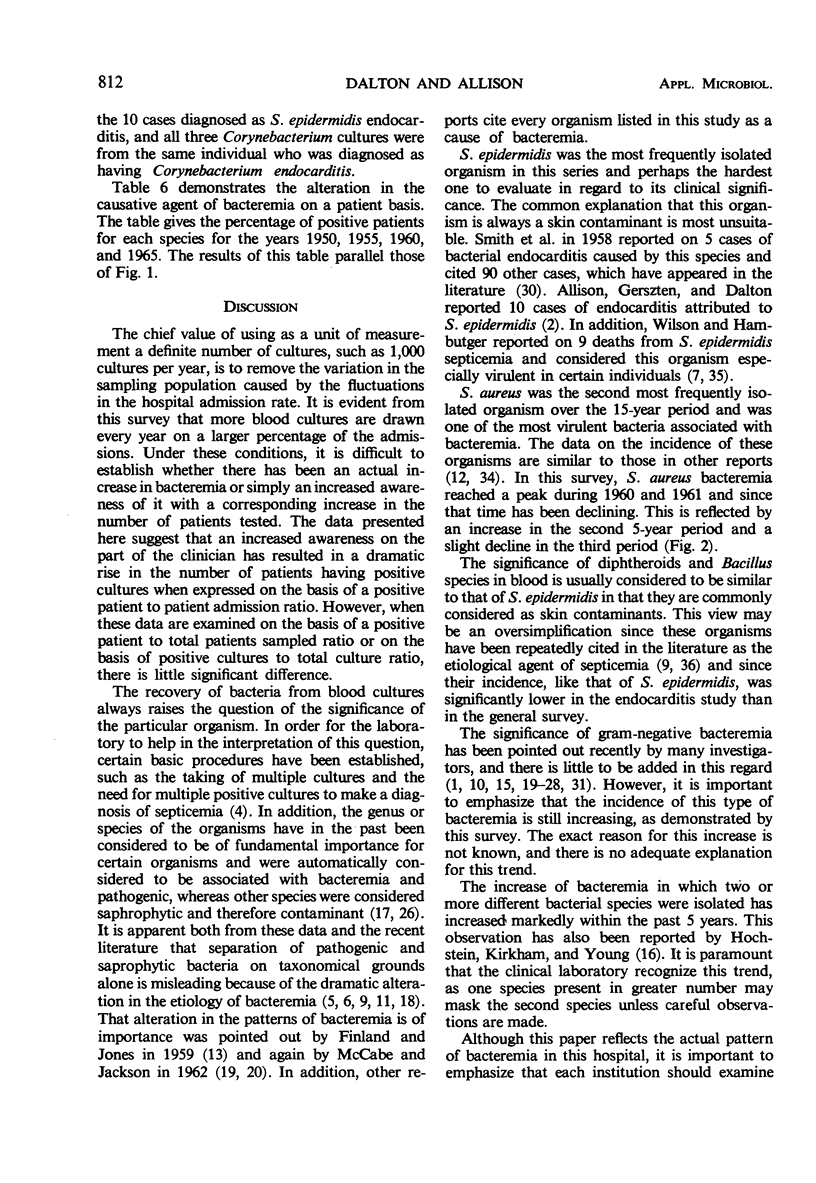
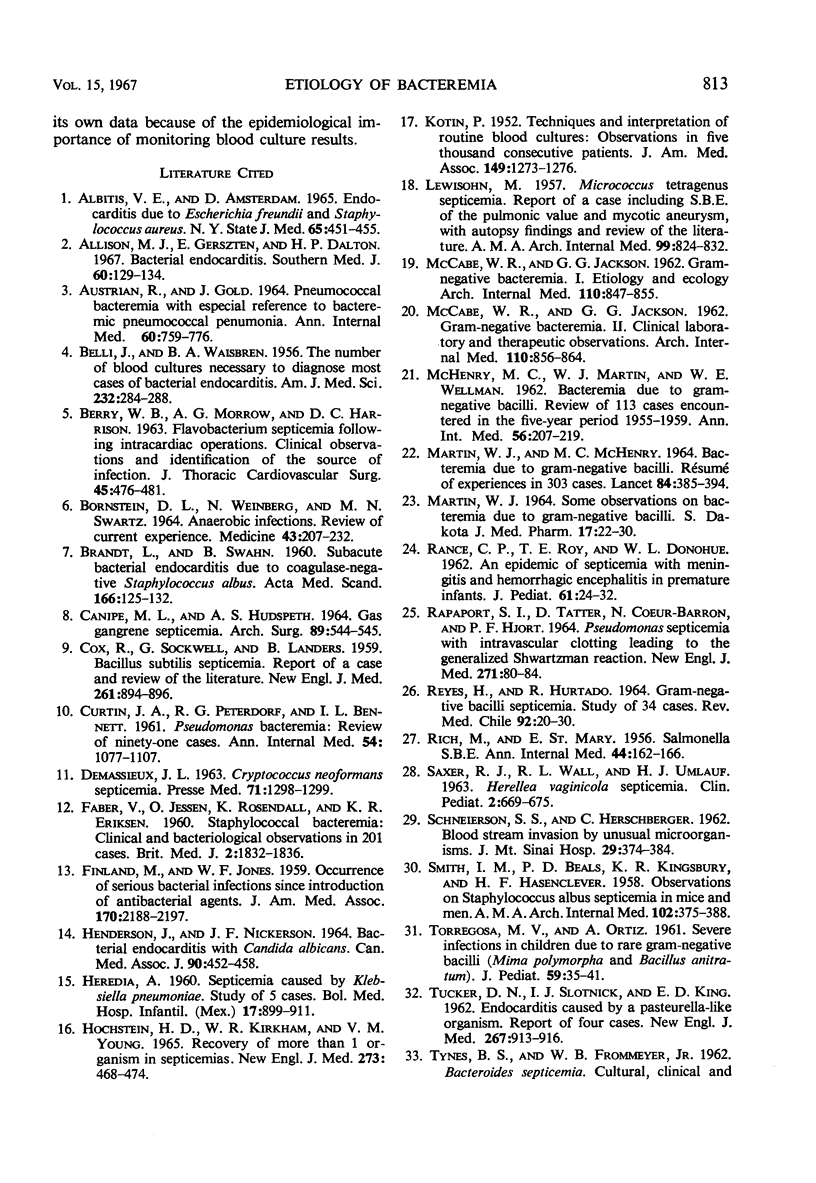
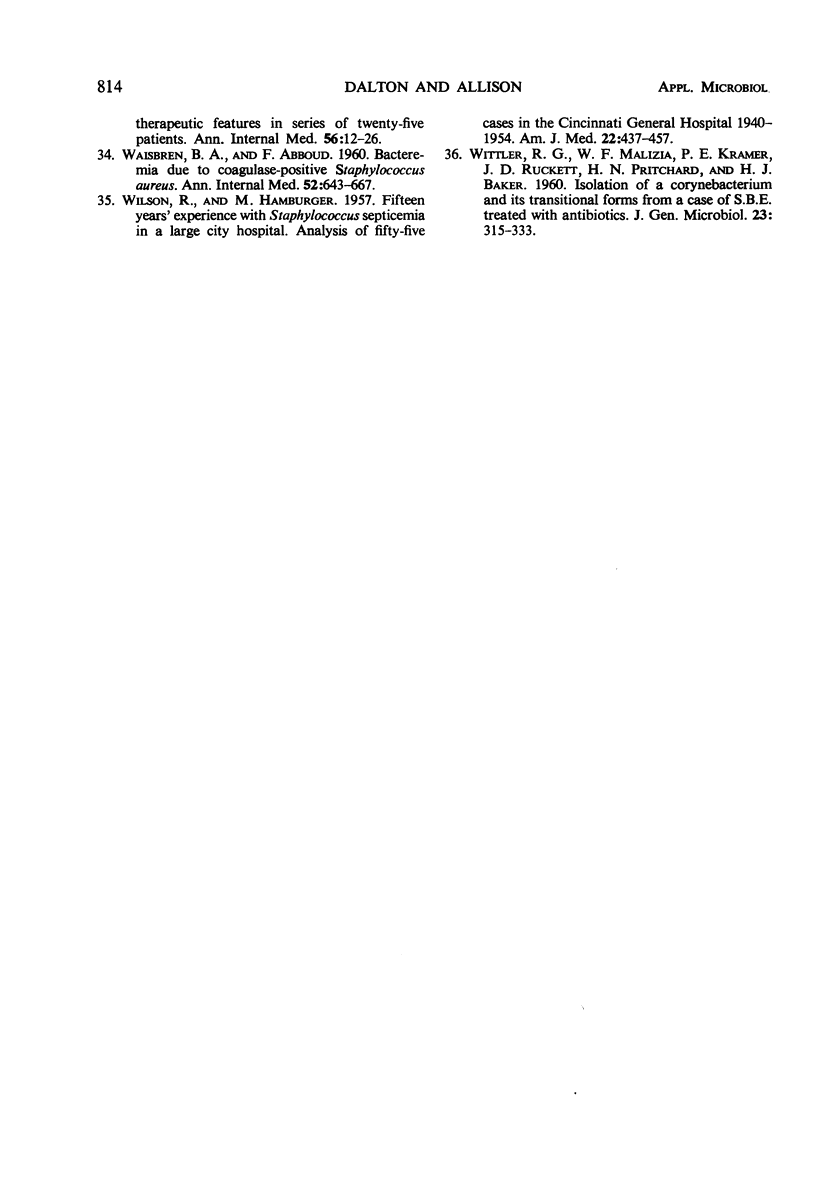
Selected References
These references are in PubMed. This may not be the complete list of references from this article.
- ALBITES V. E., AMSTERDAM D. ENDOCARDITIS DUE TO ESCHERICHIA FREUNDII AND STAPHYLOCOCCUS AUREUS. N Y State J Med. 1965 Feb 1;65:451–455. [PubMed] [Google Scholar]
- AUSTRIAN R., GOLD J. PNEUMOCOCCAL BACTEREMIA WITH ESPECIAL REFERENCE TO BACTEREMIC PNEUMOCOCCAL PNEUMONIA. Ann Intern Med. 1964 May;60:759–776. doi: 10.7326/0003-4819-60-5-759. [DOI] [PubMed] [Google Scholar]
- Allison M. J., Gerszten E., Dalton H. P. Bacterial endocarditis: pathogenesis and racial susceptibility. South Med J. 1967 Feb;60(2):129–134. doi: 10.1097/00007611-196702000-00005. [DOI] [PubMed] [Google Scholar]
- BELLI J., WAISBREN B. A. The number of blood cultures necessary to diagnose most cases of bacterial endocarditis. Am J Med Sci. 1956 Sep;232(3):284–288. doi: 10.1097/00000441-195609000-00006. [DOI] [PubMed] [Google Scholar]
- BORNSTEIN D. L., WEINBERG N., SWARTZ M. N., KUNZ L. J. ANAEROBIC INFECTIONS--REVIEW OF CURRENT EXPERIENCE. Medicine (Baltimore) 1964 May;43:207–232. doi: 10.1097/00005792-196405000-00003. [DOI] [PubMed] [Google Scholar]
- BRANDT L., SWAHN B. Subacute bacterial endocarditis due to coagulase-negative Staphylococcus albus. Acta Med Scand. 1960 Feb 17;166:125–132. doi: 10.1111/j.0954-6820.1960.tb17362.x. [DOI] [PubMed] [Google Scholar]
- CANIPE T. L., HUDSPETH A. S. GAS GANGRENE SEPTICEMIA; REPORT OF AN UNUSUAL CASE. Arch Surg. 1964 Sep;89:544–545. doi: 10.1001/archsurg.1964.01320030134023. [DOI] [PubMed] [Google Scholar]
- COX R., SOCKWELL G., LANDERS B. Bacillus subtilis septicemia: report of a case and review of the literature. N Engl J Med. 1959 Oct 29;261:894–896. doi: 10.1056/NEJM195910292611804. [DOI] [PubMed] [Google Scholar]
- DE TORREGROSA M. V., ORTIZ A. Severe infections in children due to rare gram-negative bacilli (Mima polymorpha and Bacillus anitratum). J Pediatr. 1961 Jul;59:35–41. doi: 10.1016/s0022-3476(61)80206-0. [DOI] [PubMed] [Google Scholar]
- FABER V., JESSEN O., ROSENDAL K., ERIKSEN K. R. Staphylococcal bacteraemia. Clinical and bacteriological observations in 201 cases. Br Med J. 1960 Dec 24;2(5216):1832–1836. doi: 10.1136/bmj.2.5216.1832. [DOI] [PMC free article] [PubMed] [Google Scholar]
- FINLAND M., JONES W. F., Jr, BARNES M. W. Occurrence of serious bacterial infections since introduction of antibacterial agents. J Am Med Assoc. 1959 Aug 29;170:2188–2197. doi: 10.1001/jama.1959.63010180008012. [DOI] [PubMed] [Google Scholar]
- HENDERSON J., NICKERSON J. F. BACTERIAL ENDOCARDITIS WITH CANDIDA ALBICANS SUPERINFECTION. Can Med Assoc J. 1964 Feb 15;90:452–458. [PMC free article] [PubMed] [Google Scholar]
- HEREDIA A., PRADO VERTIZ A., CARRILLO J. [Septicemia caused by Klebsiella pneumoniae. Study of 5 cases]. Bol Med Hosp Infant Mex. 1960 Nov-Dec;17:899–911. [PubMed] [Google Scholar]
- Hochstein H. D., Kirkham W. R., Young V. M. Recovery of more than 1 organism in septicemias. N Engl J Med. 1965 Aug 26;273(9):468–474. doi: 10.1056/NEJM196508262730903. [DOI] [PubMed] [Google Scholar]
- KOTIN P. Techniques and interpretation of routine blood cultures; observations in five thousand consecutive patients. J Am Med Assoc. 1952 Aug 2;119(14):1273–1276. doi: 10.1001/jama.1952.02930310009002. [DOI] [PubMed] [Google Scholar]
- LEWISOHN M. Micrococcus tetragenus septicemia; report of a case including subacute bacterial endocarditis of the pulmonic valve and mycotic aneurysm, with autopsy findings and review of the literature. AMA Arch Intern Med. 1957 May;99(5):824–832. doi: 10.1001/archinte.1957.00260050152017. [DOI] [PubMed] [Google Scholar]
- MARTIN W. J., MCHENRY M. C. BACTEREMIA DUE TO GRAM-NEGATIVE BACILLI. RESUME OF EXPERIENCES IN 303 CASES. J Lancet. 1964 Nov;84:385–394. [PubMed] [Google Scholar]
- MARTIN W. J. SOME OBSERVATIONS ON BACTEREMIA DUE TO GRAM-NEGATIVE BACILLI. SD J Med Pharm. 1964 Sep;17:22–30. [PubMed] [Google Scholar]
- RANCE C. P., ROY T. E., DONOHUE W. L., SEPP A., ELDER R., FINLAYSON M. An epidemic of septicemia with meningitis and hemorrhagic encephalitis in premature infants. J Pediatr. 1962 Jul;61:24–32. doi: 10.1016/s0022-3476(62)80225-x. [DOI] [PubMed] [Google Scholar]
- RAPAPORT S. I., TATTER D., COEUR-BARRON N., HJORT P. F. PSEUDOMONAS SEPTICEMIA WITH INTRAVASCULAR CLOTTING LEADING TO THE GENERALIZED SHWARTZMAN REACTION. N Engl J Med. 1964 Jul 9;271:80–84. doi: 10.1056/NEJM196407092710206. [DOI] [PubMed] [Google Scholar]
- REYES H., HURTADO R. SEPTICEMIAS POR BACILOS GRAM-NEGATIVOS. EXPERIENCIA EN 34 CASOS. Rev Med Chil. 1964 Jan;92:20–30. [PubMed] [Google Scholar]
- RICH M., ST MARY E. Salmonella subacute bacterial endocarditis. Ann Intern Med. 1956 Jan;44(1):162–166. doi: 10.7326/0003-4819-44-1-162. [DOI] [PubMed] [Google Scholar]
- SAXER R. J., WALL R. L., UMLAUF H. J., Jr HERELLEA VAGINICOLA SEPTICEMIA. Clin Pediatr (Phila) 1963 Dec;2:669–675. doi: 10.1177/000992286300201205. [DOI] [PubMed] [Google Scholar]
- SCHNEIERSON S. S., HERSCHBERGER C. Blood stream invasion by unusual microorganisms. J Mt Sinai Hosp N Y. 1962 Sep-Oct;29:374–384. [PubMed] [Google Scholar]
- SMITH I. M., BEALS P. D., KINGSBURY K. R., HASENCLEVER H. F. Observations on Staphylococcus albus septicemia in mice and men. AMA Arch Intern Med. 1958 Sep;102(3):375–388. doi: 10.1001/archinte.1958.00030010375005. [DOI] [PubMed] [Google Scholar]
- TUCKER D. N., SLOTNICK I. J., KING E. O., TYNES B., NICHOLSON J., CREVASSE L. Endocarditis caused by a Pasteurella-like organism; report of four cases. N Engl J Med. 1962 Nov 1;267:913–916. doi: 10.1056/NEJM196211012671804. [DOI] [PubMed] [Google Scholar]
- WILSON R., HAMBURGER M. Fifteen years' experience with staphylococcus septicemia in a large city hospital; analysis of fifty-five cases in the Cincinnati General Hospital 1940 to 1954. Am J Med. 1957 Mar;22(3):437–457. doi: 10.1016/0002-9343(57)90099-2. [DOI] [PubMed] [Google Scholar]
- WITTLER R. G., MALIZIA W. F., KRAMER P. E., TUCKETT J. D., PRITCHARD H. N., BAKER H. J. Isolation of a Corynebacterium and its transitional forms from a case of subacute bacterial endocarditis treated with antibiotics. J Gen Microbiol. 1960 Oct;23:315–333. doi: 10.1099/00221287-23-2-315. [DOI] [PubMed] [Google Scholar]


